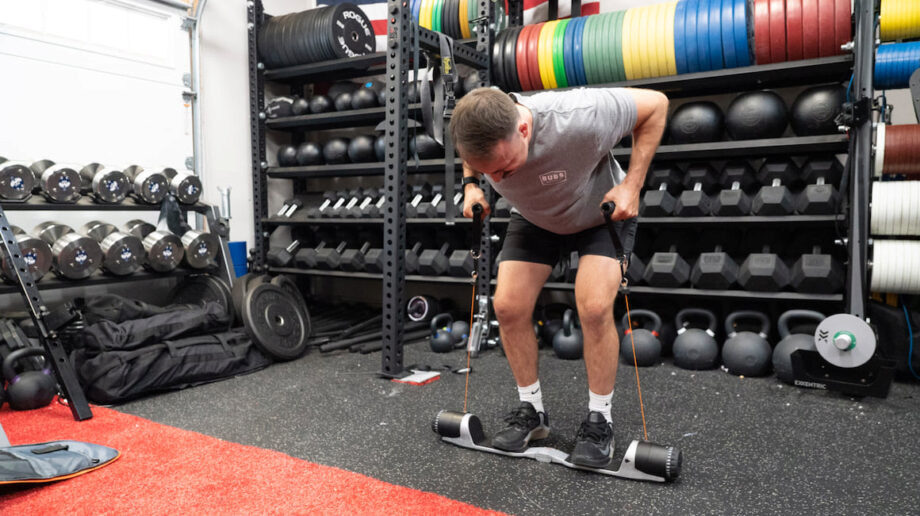Analyze the Role of Functional Training and Movement Patterns in Promoting Overall Health and Fitness
Discover the advantages of functional training for better health and fitness. Explore movement patterns and functional workouts.

In today's fast-paced world, maintaining good health and fitness has become a top priority for many. One approach that has gained significant attention in recent years is functional training, coupled with an understanding of movement patterns. This article will delve into the importance of functional training and how it contributes to overall health and fitness. We will explore various aspects, benefits, and FAQs to provide a comprehensive understanding of this topic.
In a world where sedentary lifestyles and modern conveniences often lead to physical inactivity, it's crucial to find ways to stay healthy and fit. Functional training, combined with an understanding of movement patterns, offers a holistic approach to achieving and maintaining overall health and fitness. Let's explore this natural immune system booster
Functional Training: What Is It?
Definition of Functional Training
Functional training is a fitness approach that focuses on exercises mimicking real-life movements. It aims to improve your ability to perform daily tasks efficiently and without the risk of injury. Unlike traditional weightlifting or cardio exercises, functional training emphasizes functional movements.
The Roots of Functional Training
Functional training traces its roots back to physical therapy and rehabilitation. It was initially designed to help patients regain their strength and mobility after injuries. Over time, its benefits became evident beyond rehabilitation, and it evolved into a mainstream fitness practice.
The Science Behind Movement Patterns
Understanding Movement Patterns
Movement patterns refer to the way our bodies move during various activities. These patterns include pushing, pulling, bending, twisting, and squatting, among others. Understanding and optimizing these patterns can significantly impact our physical well-being.
How Movement Patterns Affect Health
Optimal movement patterns are crucial for preventing injuries and ensuring our bodies function at their best. Poor movement patterns can lead to imbalances, pain, and reduced mobility. Functional training helps correct these patterns and promotes healthier movement.
Functional Training vs. Traditional Exercise
Key Differences
Functional training differs from traditional exercise in its focus on whole-body movements rather than isolated muscle groups. While traditional exercises have their merits, functional training is designed to plant based eating benefits
Benefits of Functional Training
Functional training offers a wide range of benefits, including improved strength, balance, flexibility, and cardiovascular health. It's particularly effective in enhancing sports performance and preventing injuries.
Promoting Flexibility and Mobility
Enhancing Flexibility
Flexibility is a cornerstone of good health. Functional training incorporates dynamic stretching and mobility exercises that promote flexibility and reduce the risk of muscle strains.
Improving Mobility
Mobility is the ability to move your joints through their full range of motion. Functional training exercises, such as yoga and Pilates, can significantly enhance your mobility, making daily activities easier.
Strength and Conditioning Through Functional Training
Building Strength
Functional training challenges your muscles in various ways, leading to overall strength gains. It also improves muscle coordination and stability.
Cardiovascular Endurance
Functional training workouts often incorporate high-intensity intervals, improving your cardiovascular endurance and boosting your metabolism.
Preventing Injuries
Injury Prevention Through Functional Training
One of the most significant advantages of functional training is its injury prevention aspect. By correcting movement patterns and improving overall strength, the risk of injuries, especially during sports and daily activities, is greatly reduced.
Correcting Imbalances
Functional training helps identify and correct muscle imbalances, which can lead to chronic pain and injuries if left unaddressed.
Nutrition and Functional Training
Fueling Your Workouts
A balanced diet plays a vital role in supporting your functional training efforts. Proper nutrition provides the energy and nutrients needed for muscle recovery and growth.
Nutrition Strategies
Consulting with a nutritionist can help you create a diet plan tailored to your functional training goals. Proper hydration and nutrient timing are essential components of this strategy.
Mental Health Benefits
The Mind-Body Connection
Functional training emphasizes the connection between physical and mental well-being. It can boost your mood, reduce stress, and increase your overall sense of well-being.
Reducing Stress Through Functional Training
The physical exertion and mindfulness involved in functional training can be an effective stress-relief tool, helping you achieve mental clarity and relaxation.
Getting Started with Functional Training
Finding a Trainer
To maximize the benefits of functional training, consider working with a certified trainer who can tailor workouts to your specific needs and goals.
Equipment and Exercises
Functional training can be done with minimal equipment, making it accessible for home workouts. Common equipment includes resistance bands, kettlebells, and stability balls.
Tracking Progress
Setting Goals
Setting achievable goals is essential in any fitness journey. Functional training allows you to set
Real-Life Success Stories
To truly understand the impact of functional training on overall health and fitness, let's explore a couple of real-life success stories:
John's Remarkable Transformation
John, a middle-aged office worker, was struggling with back pain and low energy levels due to his sedentary lifestyle. He decided to embark on a functional training journey with the guidance of a certified trainer. Over several months of consistent effort, John not only alleviated his back pain but also experienced a significant increase in strength and vitality. He now enjoys an active life and has even natural immunity supplements
Sarah's Athletic Excellence
Sarah, a competitive athlete, turned to functional training to enhance her performance on the field. By focusing on functional movements and sport-specific exercises, she improved her agility, speed, and endurance. Sarah's dedication to her training paid off as she became a standout athlete in her league, earning recognition for her exceptional skills.
How long does it take to see results from functional training?
The timeline for seeing results varies from person to person. Some individuals may notice improvements in strength and flexibility within a few weeks, while others may take several months to experience significant changes. Consistency and dedication are key factors in achieving desired results.In conclusion, functional training, coupled with an understanding of movement patterns, plays a pivotal role in promoting overall health and fitness. By focusing on real-life movements, correcting imbalances, and emphasizing whole-body strength, functional training offers a holistic approach that benefits people of all ages and fitness levels. Whether you're aiming to reduce the risk of injury, improve athletic performance, or simply enhance your quality of life, functional training can be a valuable addition to integrative approach to wellness
What's Your Reaction?

















